& Construction

Integrated BIM tools, including Revit, AutoCAD, and Civil 3D
& Manufacturing

Professional CAD/CAM tools built on Inventor and AutoCAD
15 min read
When you see ★symbol in the text below, it indicates that a feature was developed (or is planned) per voted users requests from the Idea Station for Robot.
We’re pleased to share the release of Robot Structural Analysis 2022. In this article you will find the new enhancements and features briefly explained and this time, our 2022 overview also comes with a Public Roadmap update. The roadmap will provide a broader perspective on what the intent is for our continuous investments in Structural Analysis and Design. It also provides the opportunity to ask for your contributions, as advisors, about the projects that are under development as we look to improve your experience with Robot and also help you maximize the value from your investment in the Architecture, Engineering & Construction Collection.
First comes a list of new capabilities in Robot Structure Analysis 2022:
Integrated Automation with Dynamo
Dynamo framework is now integrated into Robot with dedicated nodes, samples and enhanced documentation. This Extension is available as an add-in available through Autodesk Desktop App. The primary objective of this Extension is for Structural Engineers to use the new nodes to automate modeling tasks that include analytical models, sections, boundary conditions and loads application. One can also run calculations and read results from within the Dynamo scripts. Integrated automation with Dynamo will enhance design productivity, enabling engineers to iterate through design options faster and more fluidly with direct support from Robot analysis.
Usability Enhancements
New Quick Start Guide ★
Similar to the recently created Quick Start Guides for Revit and AutoCAD LT, Robot Structural Analysis now has its own video-based Quick Start Guide for engaging and efficient onboarding to Structural Analysis and Design workflows. The quick start guide was shaped by the opinions and guidance provided in the survey we ran a year ago that asked for your feedback on what a modern Getting Started Guide should look like and we also wanted to replicate a real-life analysis and design scenario for a typical structural project. The scope includes Modeling, Analysis, Design, Documentation and BIM interoperability stages presented in 50+ explanatory videos. There are two tracks covered respectively for Structural Steel and Concrete workflows.
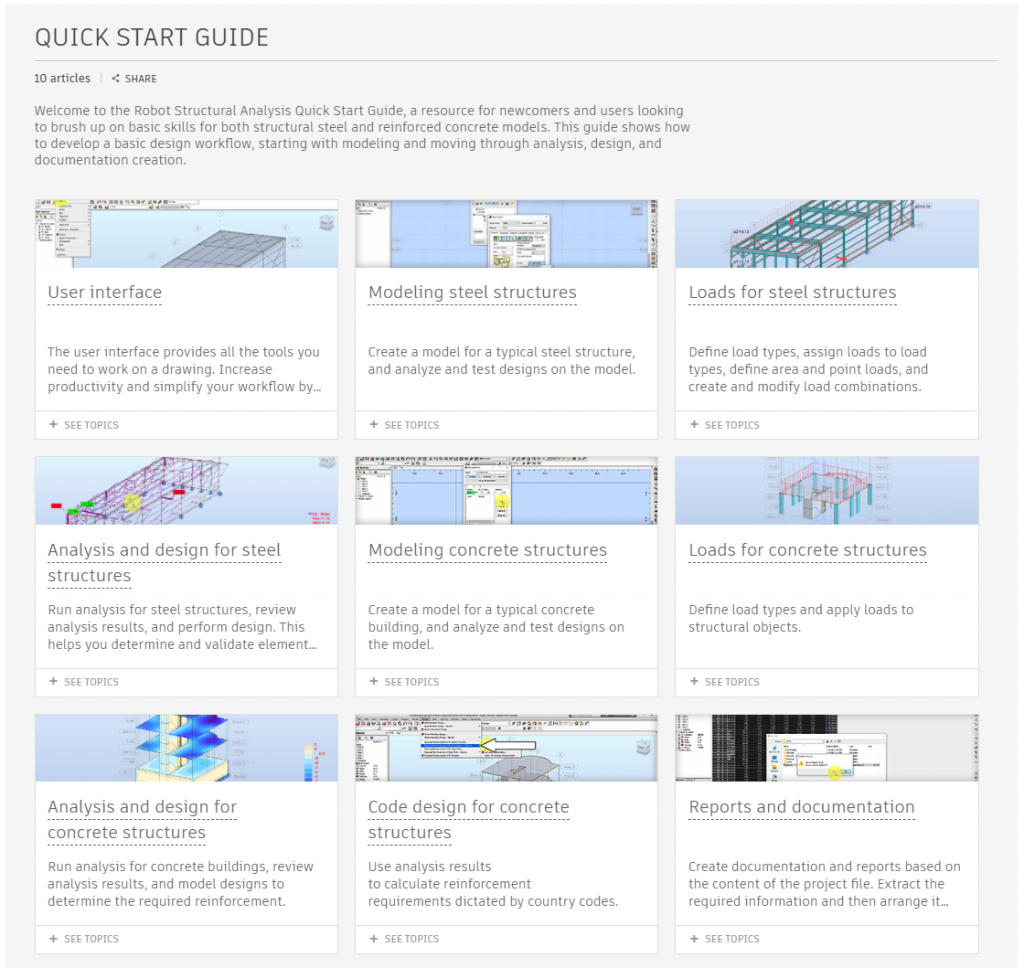
Resizable dialog boxes ★
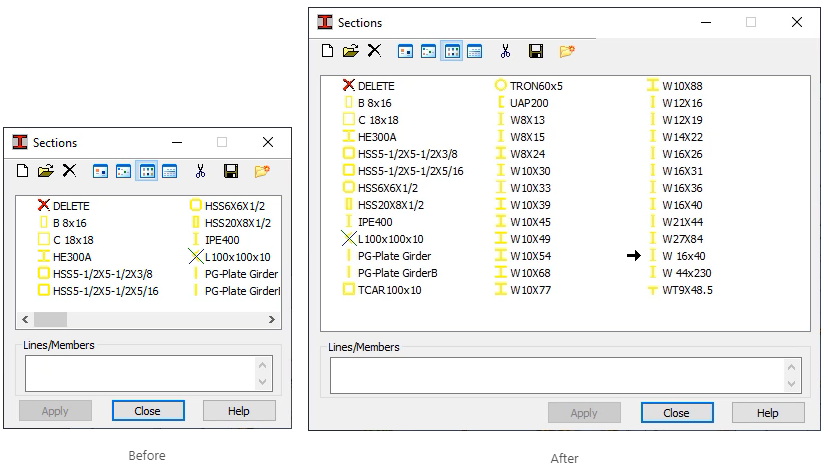
Two-Letter Keyboard shortcuts ★
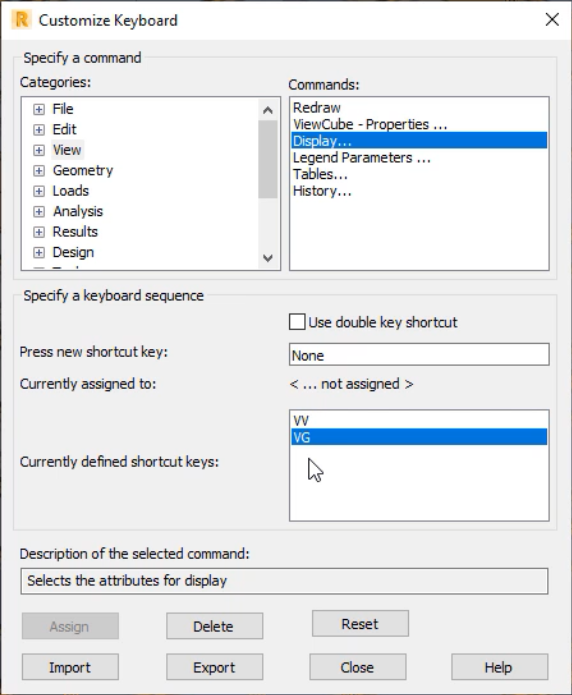
Properties dialog opening on a double click on objects★
There is new quick access to the Object Properties with a mouse double-click on the object. For this very frequently used inspection method, there is now no need to select this feature from the contextual menu anymore, significantly shortening access to object properties and enabling more immediate access. This applies to objects such as nodes, members, panels, load symbols, and text descriptions.
Ease of Copying Tables Content to Excel
You can now easily copy the content of tables with the following enhancements:
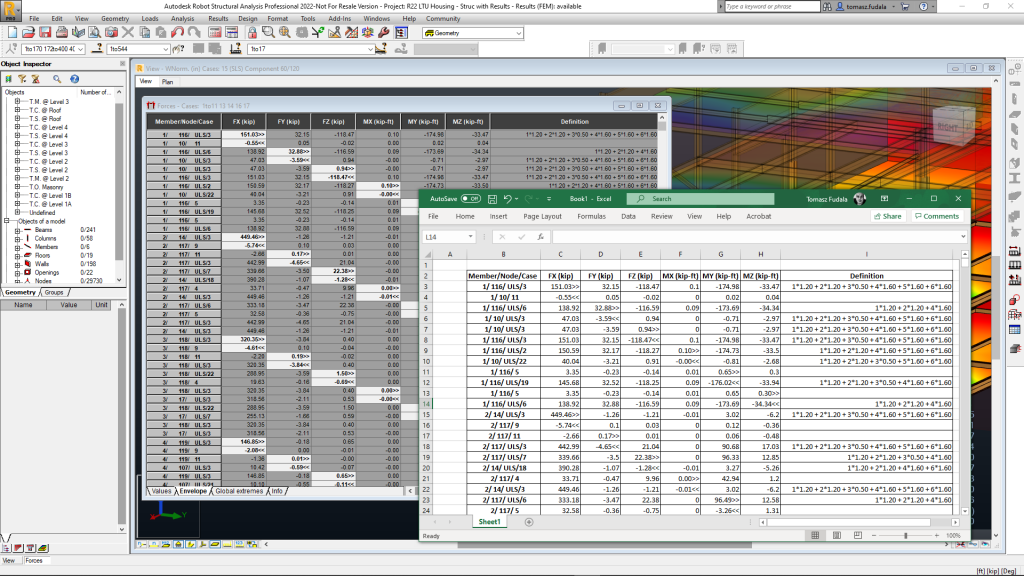
See video presenting a collection of the usability enhancements:
Structural Analysis and Code-Checking Enhancements
Highlighting Extreme Reactions
Exploring results is easier now as labels for Reactions are marked with colors for the extreme values. You can easily find maximum and minimum values labeled with red and green color.

Analysis accuracy improvements
NAFEMS Benchmark updates
Verification manual according to NAFEMS benchmarks is available at AKN
Diaphragm with Gravity Center for Stories ★
Diaphragm’s primary node for a story floor is created at the Gravity Center of a story projected to the floor plan. Before, the primary node was created at the Gravity Center of a floor itself. This allows assigning structural loads correctly when performing modal and seismic analysis.
Spectral analysis with mass eccentricity
Spectral analysis allows for automatic generation of load cases with mass eccentricity definition. Using the spectral analysis, you may use your local code spectrum and consider mass eccentricities cases automatically.
New Seismic analysis codes
The following new code regulations have been implemented:
New Load Combination codes
The following new code regulations have been implemented:
See video presenting a collection of the structural analysis enhancements:
New Steel Design codes
The following new code regulations have been implemented:
New Timber Design code
New Reinforced Concrete Design codes
Direction of reinforcement for circular panels
Required reinforcement of circular panels allows for deciding if the radial or angular reinforcement is the main direction.
Point Load Import for Punching shear
Required and provided reinforcement – allow for point load import to the punching design
Multi-threading calculation for required reinforcement
The performance of required reinforcement calculation for members has greatly improved due to implemented multi-threading processing for concrete members.
Other enhancements
Online Help enhancements
The help content has been reorganized to be easier to follow. These will help you quickly understand the basic concepts of working with Robot Structural Analysis Professional.
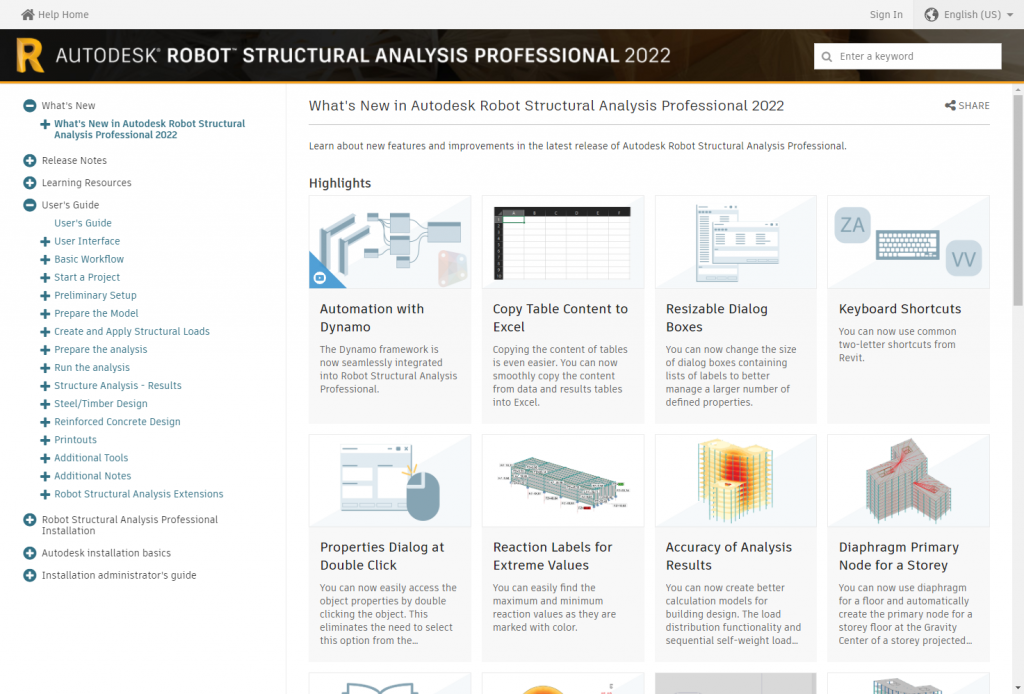
International Terminology updates
Some terminology changes were made, including renaming Bar to Member ad Plate to Slab, etc.
Quality improvements
Last, but not least: there is more that has been updated in the software based on the problem reports you had sent us. Please see the full list of fixes here.
What’s on the Public Roadmap for Robot Structural Analysis
This time, we thought it would be great to provide holistic insight into not only what we have worked on recently, but also into what we are working on right now, or are planning to invest in. The Public Roadmap below reflects the prioritization based on the feedback we’ve collected from the growing community of Robot’s users.
This roadmap may make statements regarding future events and development efforts for our products and services. These statements reflect our current expectations based on what we know today. Our plans are not intended to be a promise or guarantee of future delivery of products, services or features and purchasing decisions should not be made based upon these statements. We do not assume any responsibility to update this roadmap to reflect events that occur or circumstances that exist after the publish date of this roadmap.
Analysis
Analysis solvers are essential enablers for the overall Analysis & Design process. Even though Robot has been renowned for its versatility and performance for meshing and analysis, we should expect it to continue to grow within this area: new analysis methods, faster and multi-processing methods supporting variety of platforms and being connected to open standards. Below are specific projects we are working on or plan to invest in:
Gravity Analysis with Load Takedown method – The three primary objectives for this new capability is to enable engineers to:
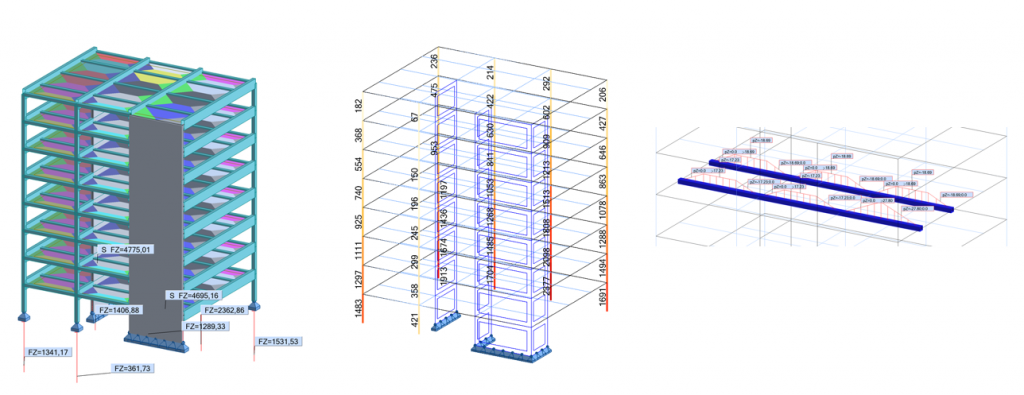
Updates to design codes for Seismic analysis – We plan to update the following design codes for Seismic analysis:
Improved results accuracy for forces reduction over walls – Improved reduction over walls would allow to reduce bending moment concentrations in more accurate way. With that, calculated reinforcement could be reduced as it would be calculated by taking into account bending moment values from supporting wall edges.
Improved results accuracy for seismic calculation with eccentricities for spectral methods – This is to align seismic analysis results concerning sums of reactions with reduced results for building stories. New calculation procedures would make it possible to obtain torsion values corresponding to seismic analysis results determined by equivalent lateral force method.
Stiffness modifiers for all directions of members and panels without specifying an orthotropic panel –
We plan to introduce reduction in compression Ax and shear Ay, Az for members. General stiffness reduction coefficients for panel would allow to simulate stiffness reduction caused by such effect as panel cracking without orthotropic panel definition.
Additional parameters for seismic analysis for US codes – We plan to add additional parameters such as: Seismic Group, Site Class, Short and 1-sec, Period Response Accelerations, Fundamental Period and Response Modification Factor, etc.
Additional mass as a substitute for the last story ★ (e.g. roof) for simplified seismic analysis – which will help engineers take into account masses for structural elements (which might have significant mass) that as such are typically not taken into account in seismic analysis.
Loads and masses application to centers of rigid diaphragms ★ – which will make it possible for engineers to apply custom lateral loads to building slabs. This feature would enable definition of additional loads and masses in rigid diagrams’ mass center. It will result in more accurate internal forces calculation, avoiding unnecessary loads and mass eccentricity definitions.
Code Design
In this category, we cover investments in design codes to help our users be compliant with latest regulation for many countries. Local codes enable end-to-end analysis to design workflows for engineers to take design decisions for whole buildings and at objects level. At the same time, Robot, along with Revit, is open to be a platform for specialized and tailored-where-needed code design tools from the broader partner ecosystem, especially in the areas where it intersects with model-based detailing workflows. Below are specific projects we are working on or plan to invest in:
To accommodate growing demands to customize and extend country specific design codes, we would like to make some of our design code algorithms available and open for public★. As this happens, local experts and communities could help us deliver country specific regulations that complete Analysis and Design workflows natively with Robot. In response to what’s been discussed on the User Forum, we are inviting experts and communities from a few countries to co-develop reinforced concrete design codes for Robot. We hope it will help address some of the top voted requests from the Idea Station for Robot.
To get Robot prepared as a platform to support new codes, we would like to fill the gap with a few country-specific components: New material and rebar databases for Brazil ★
Similarly, to enable Analysis processes for the new countries, we plan to ad Load combination regulation for Brazil ★
Below are additional new and updated codes we are planning to implement:
New codes or updates for Structural Steel:
New codes or updates for Reinforced Concrete:
New Codes or updates for Load combinations:
Usability Enhancements
In this area we are trying to capture and respond to users’ feedback related to overall productivity and ease of use for Robot. This includes small fixes that address annoying product gaps and enhancements that increase engineering productivity and save time.
Analytical Collaboration in BIM ★This is an important category of improvements as it sets forth and responds to users’ requirements around desired analytical modeling productivity and collaboration practices. Not only does it need to foster engineering productivity and freedom of capturing design decisions in a modeling environment, it should also help engineers work with the broader design team in a modern and effective manner.
Having Robot being shipped and developed along with Revit – the BIM authoring platform in the Autodesk AEC Collection – provides the opportunity for further modernization of the overall user experience as regards to structural BIM workflows.
We are reimagining Analytical Modeling within Revit so that:
We plan to add new types of capabilities in Revit to make it possible for users to:
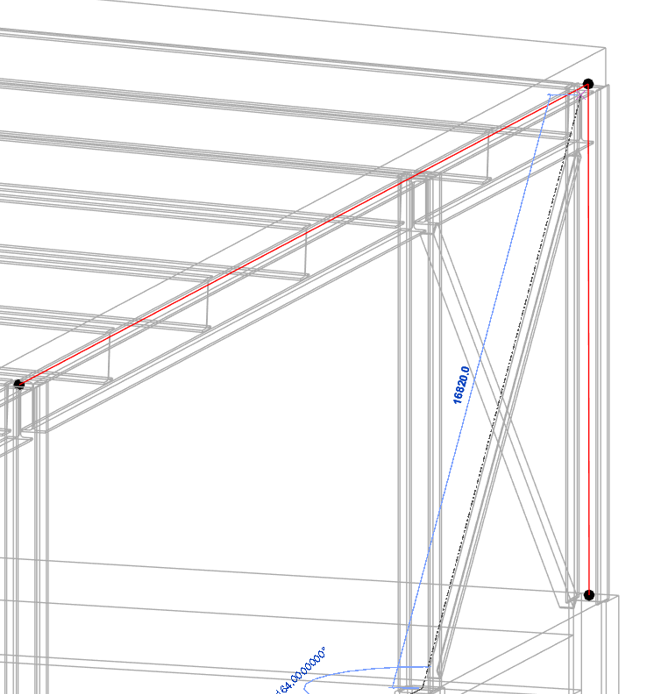
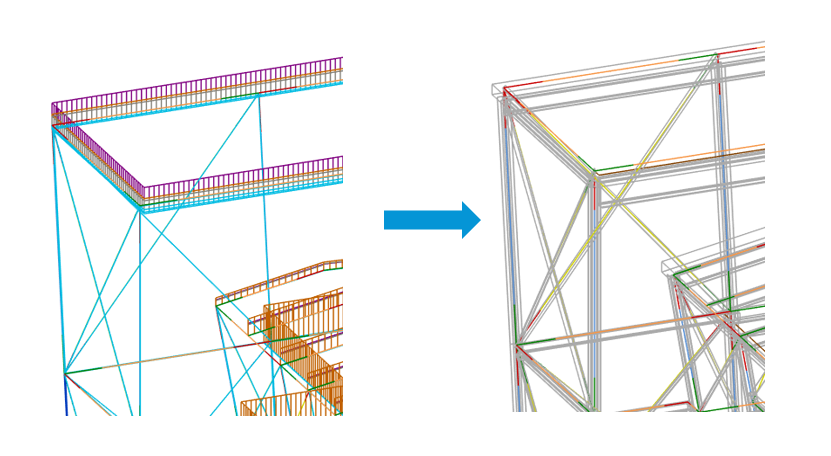
Last but not least, we will continue enhancing Analytical Automation with Dynamo scripts that is open for customization, that drives Analytical model creation for a given type of structural models, whether it would be a framing structure, a building or a bridge.
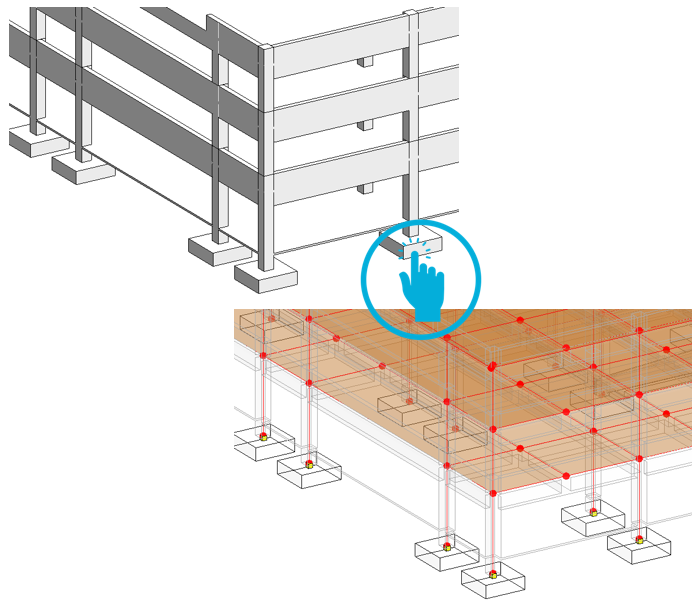
So what does it mean to Robot users? Depending on your design project type, whether you’re working as part of a BIM team or in a typical CAD manner, we’re reimaging Analytical Modeling so that you would be able to interchangeably use or Robot or Revit to create your Analytical Model to run analysis and design from, keep the analytical data as part of the Common Data Environment, use design output to annotate engineering documentation and hand-over results and design intent as input data for further phases of the process, especially detailing (e.g. rebar or steel connections) in Revit.
Staying Connected
For everything we have released and for what we plan to do next, we would like to encourage you – as the Robot user community – to share your feedback through:
By clicking subscribe, I agree to receive the AEC newsletter and acknowledge the Autodesk Privacy Statement.
Success!
May we collect and use your data?
Learn more about the Third Party Services we use and our Privacy Statement.May we collect and use your data to tailor your experience?
Explore the benefits of a customized experience by managing your privacy settings for this site or visit our Privacy Statement to learn more about your options.